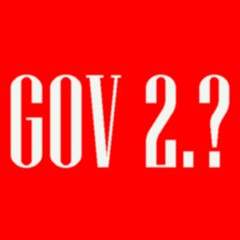April 20, 2011
On fearless advice and loyal implementation
I traveled across British Columbia last month, visiting a series of three Employment Insurance (EI) processing plants, to deliver talks about engagement and career development. I met a lot of dedicated public servants, made new friends, and learned more about front-line service delivery than many Ottawa-based policy wonks do this early in their career.
I’ve been thinking a lot about the sessions and the conversations that emerged at the three different sites and here is where my mind has settled …
Regardless of what you were hired to do – be it providing traditional policy advice in the National Capital Region, or “crushing” EI claims for Canadians in a processing plant in Kamloops – your role as a public servant is to deliver “fearless advice and loyal implementation”. What I’ve found is that there is a divide, real or imagined, between those of us in Ottawa who were hired to deliver “fearless advice” and those of us in the regions who are expected to “loyally implement”. This isn’t ubiquitous, but was my general impression. It is an impression that was hammered home when someone asked me why Ottawa couldn’t just fix the culture in the regional office, as if some sort of Deputy decree could change their specific working conditions. What struck me most about the comment wasn’t the idea that culture could somehow be made by decree, but rather the underlying sense of helplessness, as if culture couldn’t be affected by those who are actually mired in it.
I think the problem is that we have collectively misinterpreted the significance and underestimated the opportunities we have to effect our work culture and sub-cultures, regardless of where we work or what we work on. We mistakenly think of fearless advice as something that only the people at the very top of the organization do; something that is reserved for private meetings between Deputies and their Ministers. In fact, I think that speaking truth to power (fearless advice and loyal implementation) more often means pushing against the small “p” office politics and the small “c” culture of the bureaucracy. In other words, fearless advice isn’t reserved for ministerial briefings, but rather happens in the hallways, over cubicle walls, and in the lunch rooms among peers.
Think of it in terms of the long tail:
Let me end by saying this: regardless of where you work, or what your role is, your responsibility is to articulate an argument, back it up with the facts, infuse it with passion, and deliver it with non-partisan conviction, wherever you see the opportunity to do so.

 I’ve been thinking a lot lately about
I’ve been thinking a lot lately about  It is emblematic of the times that nascent Gov 2.0 is without adequate descriptors readily accepted and simply described. This has less to do with the availability of labels than the fact that Gov 2.0 is a ship without a rudder— it still lacks a unifying theme and clearly articulated purpose behind the Gov 2.0 transformation. Gov 2.0 still means many things to many people—often different.
It is emblematic of the times that nascent Gov 2.0 is without adequate descriptors readily accepted and simply described. This has less to do with the availability of labels than the fact that Gov 2.0 is a ship without a rudder— it still lacks a unifying theme and clearly articulated purpose behind the Gov 2.0 transformation. Gov 2.0 still means many things to many people—often different.